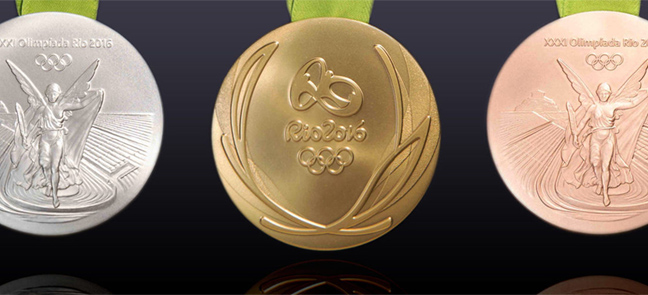All of the winners, in the Olympic Games, receive a gold medal in recognition of their great achievement. But have you ever wondered about the origin of the Olympic medal designs?
Medals were not awarded to the winners in the ancient Olympic Games. First place finishers received an olive branch, which was meant to be worn on their head. Second and third place finishers didn’t receive any award.
At the first modern Olympic Games in 1896, silver medals were awarded to all of the winners and the second place finishers were awarded the bronze. Then, in 1900, the winners received trophies or cups rather than medals. In the 1904 Games held in St. Louis, the gold replaced the silver as the medal awarded to those who finished in first.
In 1912, the last Olympic gold medal made entirely of gold was awarded. In these modern day Olympic Games, the gold medals are made of sterling silver. They are covered with a thin layer, about six grams or .21 ounces, of pure gold. The medal must be at least 3 mm thick and 60 mm in diameter.
Eventually, the medals’ design became standardized in 1928 with a more traditional design. Nike, the goddess of victory, was featured on one side and on the reverse side, an Olympic stadium in the background.
A new design was created for the 2004 Games, which featured the Greek Panathenaic Stadium. The image was based on the statue carved in the year 421 BC and kept in the Temple of Zeus located in Olympia. It highlights Nike flying into the stadium to crown the winners with a headdress.
Olympic Media Design Fun Facts
Did you know that on the reverse side of the medals, each of the organizing committees was given the opportunity to choose their preferred design?
Olympic Medals, Atlanta 1996
ACOG or Atlanta Committee for the Olympic Games chose the logo of ACOG and the pictogram of a specific sport the medal was awarded for.
Olympic Medals, Athens 2004
The copper used for 2004 Athens Olympics medals came from the country of Cyprus.
Olympic Medals, Beijing 2008
The Beijing medals were 6mm in thickness and 70mm in diameter and were inlaid with a jade disk.
Olympic Medals, London 2012
David Watkins designed the medals and were produced by Royal Mint. The thickness is 7mm, the diameter 855 mm and it weighs 375 to 400 grams.


